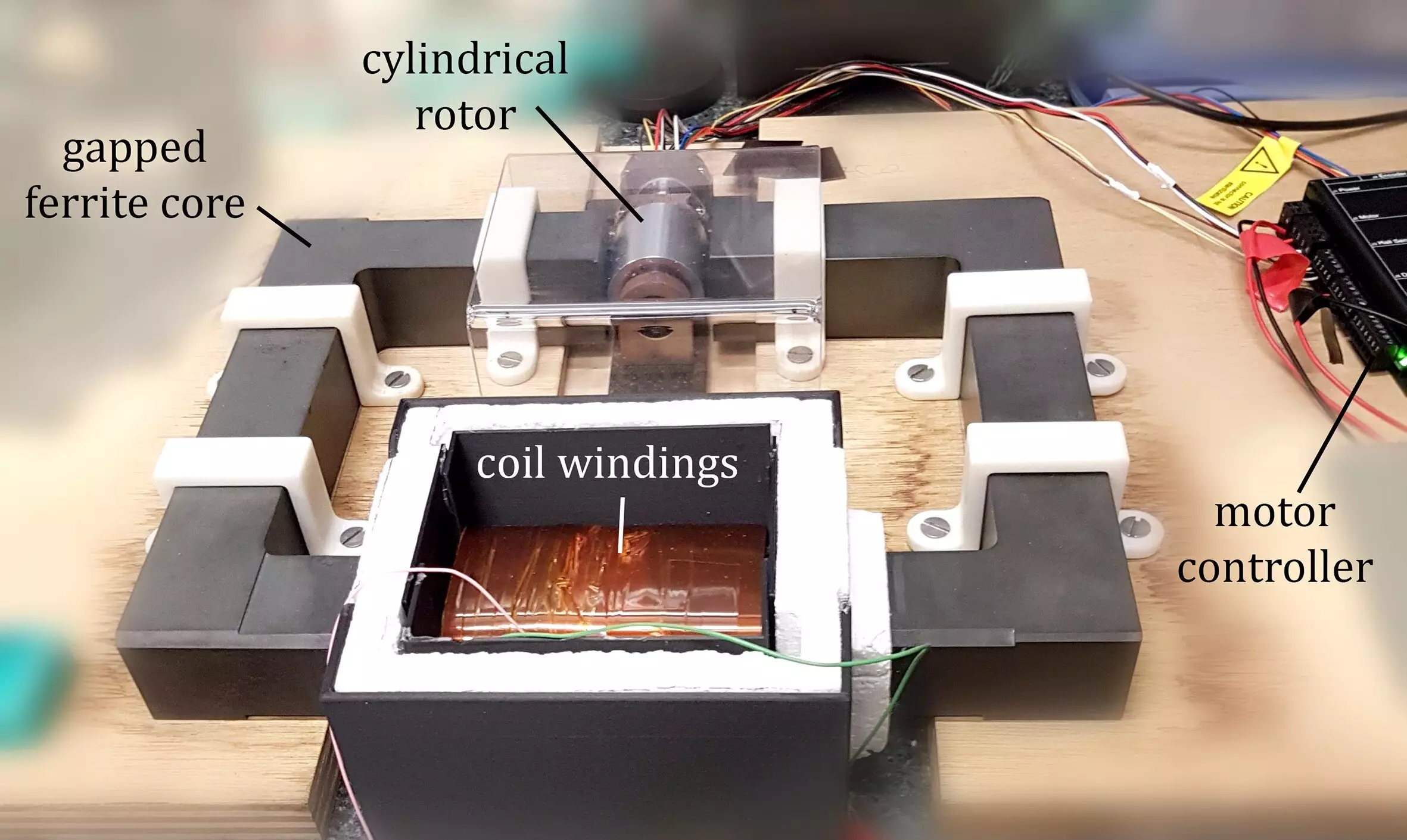

In a groundbreaking study, physicists at the University of Southampton have provided the first experimental proof of a half-century-old theoretical concept known as the Zel’dovich effect. Named after the Soviet physicist Yakov Zel’dovich, this effect involves the amplification of energy in electromagnetic waves when they bounce off a rapidly spinning object—in this case, an aluminum cylinder. This research challenges long-held beliefs regarding the interaction of such waves with angular momentum and opens new avenues for further study in the fields of physics and engineering.
The key to the Zel’dovich effect lies in its unique principle: when twisted waves—those carrying angular momentum—interact with a rotating object, they can be amplified rather than absorbed. Dr. Marion Cromb, a Research Fellow leading the experiment, elucidates that the cylinder must rotate at a speed surpassing the incoming wave frequency for this amplification to occur. This phenomenon creates conditions under which the electromagnetic waves undergo a transformation, shifting their frequency into the “negative” domain, which alters their interaction with the spinning object. Essentially, what typically results in wave absorption transitions into a process wherein the waves reflect with increased energy.
This pivotal finding has been published in the esteemed journal *Nature Communications*, marking a significant milestone in wave physics.
The Zel’dovich effect shares conceptual ground with the Doppler effect, a common experience for many. For instance, as an emergency vehicle approaches with its siren on, listeners perceive a higher pitch due to the compression of sound waves in front of the vehicle. Conversely, as the vehicle recedes, the sound waves spread out, resulting in a lower pitch. A similar shift happens with light waves—astronomers utilize this principle to assess the motion of celestial bodies relative to Earth. By understanding these established phenomena, the application of the Zel’dovich effect becomes clearer, as it introduces an innovative approach to the twist of twisted waves under rotational dynamics.
The Southampton research team employed relatively straightforward apparatus—a resonant circuit paired with a spinning aluminum cylinder—to test the theoretical framework of the Zel’dovich effect under the influence of electromagnetic fields. Earlier studies had established the effect within the domain of sound waves, but translating those findings into electromagnetic experiments presented unique challenges. The research team’s success in recreating the effect using simpler tools demonstrates significant advancements in experimental physics.
Dr. Cromb expressed satisfaction with their findings. By creating precise conditions to illustrate the twisting of electromagnetic fields, the team was able to observe—and ultimately confirm—the notion that waves could possess negative frequency. This revelation fundamentally alters how physicists understand wave interaction with rotating bodies, placing the spotlight on the importance of rotational dynamics in energy amplification.
The scientists involved in this research anticipate that the validation of the Zel’dovich effect in both sound and electromagnetic domains indicates its fundamental nature, implying further exploration into different physical systems. The path forward includes investigating the quantum version of this effect, wherein the principles might apply to the quantum vacuum—a prospect that could revolutionize quantum physics.
Professor Hendrik Ulbricht, a leading figure on the project, remarked on the significance of their accomplishment and emphasized the necessity of pursuing further investigations. The relatively straightforward experimental setup not only provided a rewarding outcome but also suggests a plethora of applications and research opportunities in the realms of electrical engineering and renewable energy technologies.
The implications of these findings extend beyond theoretical physics. As the researchers theorized, the insights gleaned from the Zel’dovich effect could aid in advancements related to induction generators, specifically those utilized in wind turbines and other renewable energy sources. By harnessing the principles demonstrated through this experiment, engineers may find innovative methods to enhance energy efficiency in various technological applications.
The successful proof of the Zel’dovich effect marks a pivotal leap in both theoretical understanding and practical application of wave physics. As researchers continue to explore this phenomenon, they not only illuminate our comprehension of electromagnetic interactions but also pave the way for significant advancements across multiple scientific fields. The findings reinforce the notion that even deeply entrenched theories can be validated and applied in surprising ways, shaping the future of physics and engineering for generations to come.
The battle against antimicrobial resistance (AMR) has become one of the paramount public health challenges…
In our relentless pursuit of healthier lifestyles, the craze for sugar alternatives has become a…
As climate change continues to wreak havoc globally, Africa's vulnerability makes it imperative for nations…
The realm of quantum technology has long been hailed as the next frontier in scientific…
The fascination surrounding black holes often breeds misconceptions, particularly the idea that they obliterate not…
In a groundbreaking endeavor, researchers at Trinity College Dublin have merged the worlds of chemistry…
This website uses cookies.